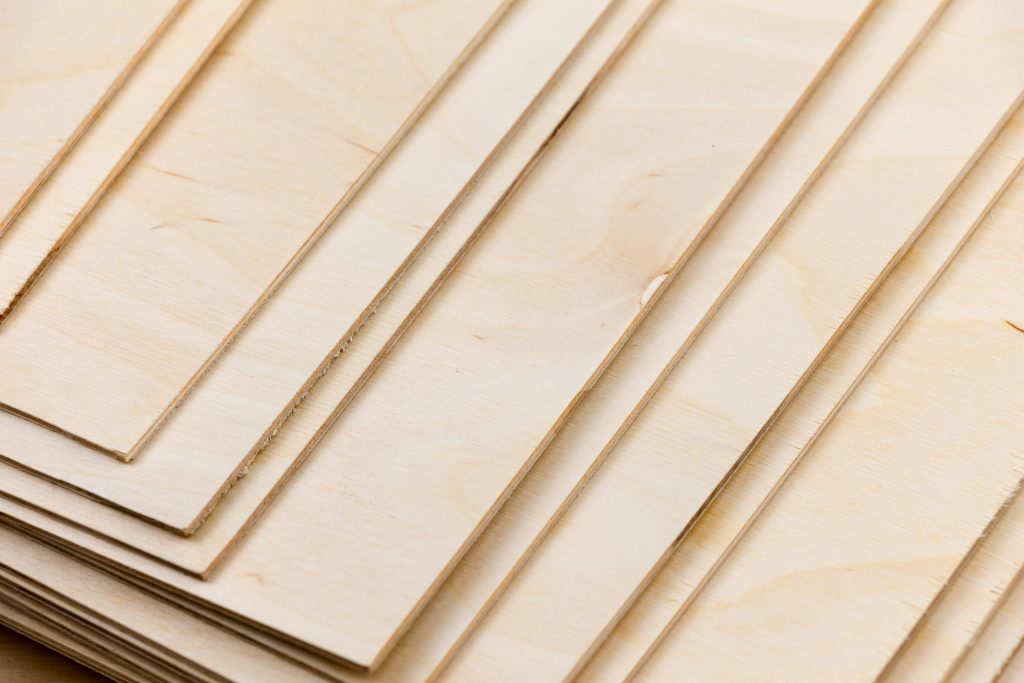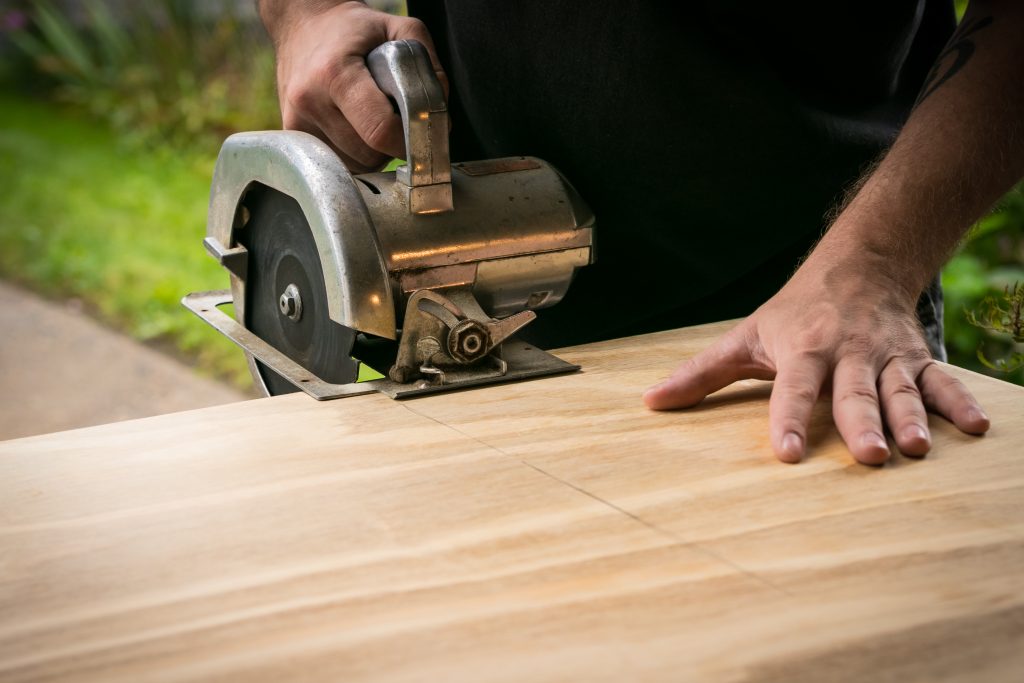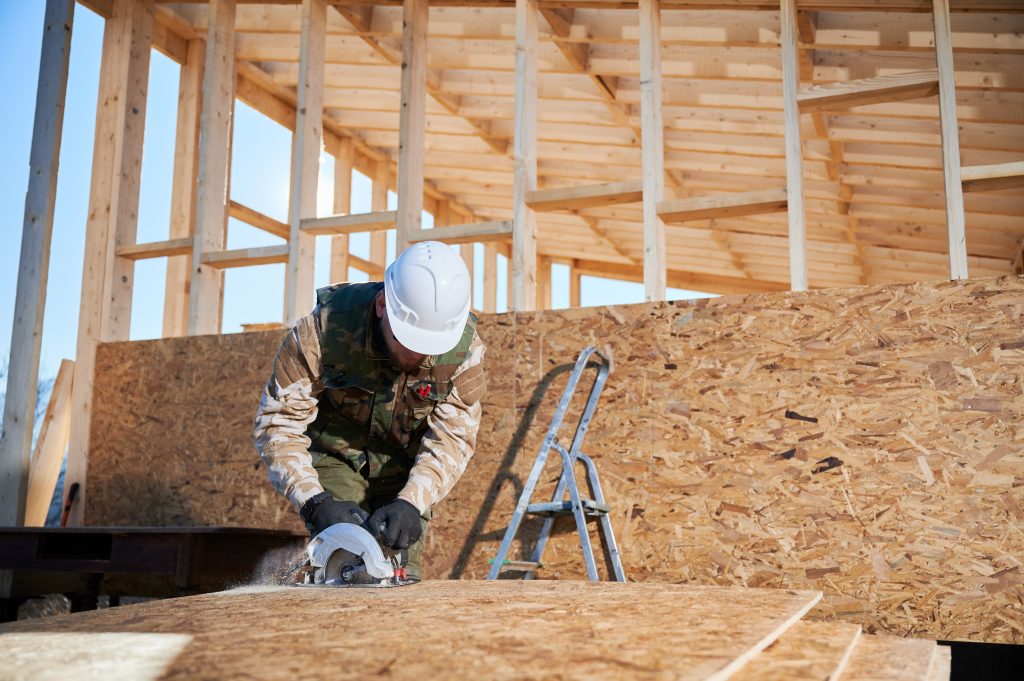What Is Plywood? The Ultimate Plywood Guide
Our Ultimate Plywood Guide:
On the list of the world’s most versatile building materials, you can expect wood or timber to come first most of the time. A regenerative and typically sustainable natural building material, mankind has been using wood to construct furniture, houses, and even transportation (the horse and cart) for thousands of years now. Cut to today, and timber is still used in the construction of homes across the globe.
But what is the most versatile type of wood material? For most carpenters and construction industry professionals, the simple answer to this question is likely to be plywood panels. Chances are we all have at least one piece of furniture in our home that’s been made using furniture-grade plywood. And even if you don’t have any visible plywood in your living spaces, your home may have even been built using structural plywood. And there are actually a large variety of plywood panels available on the market today, all with their own suitable use cases or applications.
If you want to learn more on ‘what is plywood’ that’s undoubtedly all around you as you sit and scroll down this webpage, then this blog post is the read for you. Today, our team at Cabinet Timbers, your local building materials supplier, shares the answers to all the questions that you may have about plywood, including what is plywood, what it’s used for, and where you can expect to find all the different types of plywood panels.
Here’s what we’ll be covering in our plywood guide blog today:
NEED BUILDING SUPPLIES?
No stress, we're here to help. Fill out the form below for a free quote and consultation with our experts.
What is plywood?
If your knowledge of plywood starts and ends with it being a ‘type of wood’, then let’s start with the answer to a very simple question and the title of our blog today: ‘what is plywood?’ In a nutshell, plywood is a type of composite wood material that’s made of stacked or layered timber veneers. These veneers are glued and pressed together to create a solid wood panel with a striped cross-section, the stripes being all of those veneer layers.
Because of its unique production process, plywood is considered to be one of the strongest wood composite materials available today. As plywood panels use actual slices of timber rather than wood fibres (like MDF or medium density fibreboard), plywood is also an ideal material for those looking to maintain a natural timber look in their finished products without having to deal with the extra weight of solid timber. For information read on about the debate between MDF vs Plywood.
And because plywood is made using complete timber veneers rather than glued wood fibre or wood particles, plywood is also considered to be a more sustainable material when compared to MDF and particle board, for instance. Plywood can also be responsibly disposed of or recycled, which further increases its popularity as an affordable and sustainable alternative to solid timber.
How is plywood made?
Plywood’s unique properties in comparison to other wood composite materials can be traced all the way back to its highly meticulous manufacturing process. So how is plywood made, and what’s so special about this manufacturing process?
As we mentioned, plywood is produced using thin wood veneers, which is another term for thin slices or ‘plies’ of wood, hence the name ‘plywood’. These wood veneers are sliced directly from solid timber logs. The slicing or peeling process allows wood veneers to maintain their natural wood grain patterns, which in turn actually helps strengthen plywood sheets.
Layering wood veneers in a method that alternates the wood grain from ply to ply also further aids in strengthening plywood sheets – much like using the riffle technique to shuffle a deck of cards, or how interleaving the pages of two separate phone books makes them impossible to pull apart. Read more about our timber veneer guide, to gain a better understanding about veneers.

What is plywood used for?
Thanks to its superior durability and more natural wood appearance in comparison to other wood composite materials, plywood can actually be used for a wide range of applications, spanning from structural support uses to more decorative applications. And as we mentioned, outlining the best applications for your plywood starts with understanding the type of plywood you’re working with.
For instance, birch plywood and other softwood plywoods are typically used to produce high-quality timber furniture. Depending on the plywood grade, your birch plywood furniture could be used both in interior and semi-exposed exterior environments.
And speaking of using plywood in exterior or outdoor settings, it is actually possible to make your plywood sheets waterproof. The main factor for waterproofing plywood is actually in the types of glue sealants used when producing plywood sheets. This unique type of plywood is also suitable to be used in boat building, building kitchen, laundry and bathroom spaces, and for a range of other marine applications.
So the next time somebody asks you “what is plywood used for?’ or ‘is plywood waterproof?’, you can wow them with your plywood knowledge by confirming that it’s not the wood itself that’s waterproof, but the tight, Type A glue sealants that make it possible to use plywood in marine applications.
The different types of plywood
Although plywood is generally considered to be strong and durable, there are actually different types of plywood with varying levels of strength and moisture-resistance. One way to determine what qualities or durability to expect from a piece of plywood – and thus, what that plywood’s best use cases are likely to be – is to look at its plywood grade.
There are generally considered to be four different plywood grades, these being:
- A-Grade Plywood – the highest quality plywood panel with no wood defects, A-grade plywood is typically used for constructing decorative surfaces in both exterior and interior settings.
- B-Grade Plywood – a more cost-effective option to A-grade plywood sheets, B-grade plywood possesses only few wood defects, making it a suitable material for interior wall or ceiling cladding, and furniture making or cabinetry.
- C-Grade Plywood – a type of plywood that typically has more wood defects than A- or B-grade plywood, and may often correct wood defects through the application of wood fillers. C-grade plywood is ideal for internal structural applications rather than for decorative or externally facing applications.
- D-Grade Plywood – the lowest grade for plywood panels, D-grade plywood is more likely to possess a larger amount of visible wood defects and even textual disparities. D-grade plywood is most likely to be used for non-aesthetic purposes (i.e. internal structural supports or support beams in ceiling cavities for residential and commercial properties).


Guidelines for cutting and painting plywood
Of all the many benefits of plywood that we’ve outlined today, it’s also important to note that plywood does come with its fair share of caveats. For starters, retaining the natural wood grain of timber veneers actually makes plywood trickier to cut and even to paint than other wood composite materials. It’s easy to cut or paint wood composite materials that use wood fibres as these are denser materials with no grain pattern, providing a smoother surface that’s less likely to be textured or contain wood defects.
Thankfully, learning how to cut plywood is an easier process than you may expect it to be. It certainly doesn’t take 10,000 hours to become a plywood cutting pro. All you need is a little patience, some protective gear, and the right tools – we recommend carbide tipped blades and saws, for instance. Once you have these basics, cutting plywood is a simple three-step process:
- Step 1 – Position your plywood plank
- Step 2 – Position your blade or cutting knife
- Step 3 – Complete your cut
When cutting plywood, positioning your plywood panels elevated with a clamp is best, rather than attempting to cut them on a flat surface. Similarly, positioning your blade or knife at a higher angle is also ideal, as this will produce a cleaner, perpendicular cut. And remember to sand down your plywood following any cuts, just to ensure that your plywood panels are free from splinters!
Sanding is also a valuable preparatory step to painting plywood, as it smooths the surface of your plywood panels and makes it easier to apply paint and primer coats without the risk of bumps or lumps. Check out our how-to-guide for more tips on painting plywood.
How to choose the right plywood for your next project
With all the benefits and unique qualities of plywood outlined above, the final question you’ll need to ask yourself is ‘what is the best type of plywood for my project?’. Thankfully, if you’ve stuck with us this far, you should have a clearer answer to this question. For starters, whether you are looking to know if bending plywood is right for your project, which works well with our interior plywood panels. Better yet, understanding where you’d like to install or position your plywood (i.e. in interior or exterior settings), can help you determine the right plywood grade for your next woodworking or construction project. As A-grade plywoods will always cost more than B- to D-grade plywoods, defining the budget for your project can also help determine which plywood grade is right for you.
You should also consider the different types of plywood materials available to you, and their own unique use cases. Whether it be non-structural vs structural plywood or in regard to marine-grade plywood can be great for boat building or constructing wet areas in properties (i.e. kitchen and bathroom spaces). Contrastingly, exterior plywood may possess Type B glue sealants, which make them less water resistant than marine-grade plywood, but still suitable for installation or use in semi-exposed outdoor settings.
And then there’s prefinished and specialty plywood, a category which provides plenty of variety and can thus be used for a wide range of applications – spanning from furniture and cabinet making to architectural applications. No matter how you’re looking to use your plywood, exploring the range of options available to you is inarguably the best method for selecting the right plywood for your next project, so don’t be afraid to scroll through our full range of plywood here at Cabinet Timbers.
Why use Cabinet Timbers as your trusted plywood supplier?
Of all the wood panel products we have on offer here at Cabinet Timbers, our range of plywood sheets is perhaps the most in-demand. Thankfully, our range of plywood panels boasts high-quality plywood that’s suitable for a wide variety of applications. Whether you’re looking for water-resistant marine-grade plywood or interior plywood for decorative installations, you’ll be sure to find some plywood materials to suit your next woodworking or construction project to a tee.
We also believe that our clients deserve the luxury of choice. That’s precisely why our range of plywood also includes different dimensions, thicknesses, and plywood grades across all of our plywood types. And for even more added value, our cost-effective plywood products have also been sustainably produced through our partnerships with Austral Plywood and CarterHoltHarvey, two plywood manufacturers that ensure their products are sourced from sustainably managed forests, and are produced in accordance with EWPAA product certification requirements.
With such an extensive selection of affordable and sustainably sourced plywood materials at your fingertips, Cabinet Timbers is unquestionably your one-stop shop for all plywood and other wood composite materials in Melbourne. Explore our full range of plywood materials and check out our wood specials for added savings today.
Have any more questions about what is plywood? Did you want to know more about any of the plywood materials we have on offer? Then be sure to contact our friendly team here at Cabinet Timbers by phoning (03) 8353 2222 today, or by filling out our web enquiry form.
NEED BUILDING SUPPLIES?
No stress, we're here to help. Fill out the form below for a free quote and consultation with our experts.

